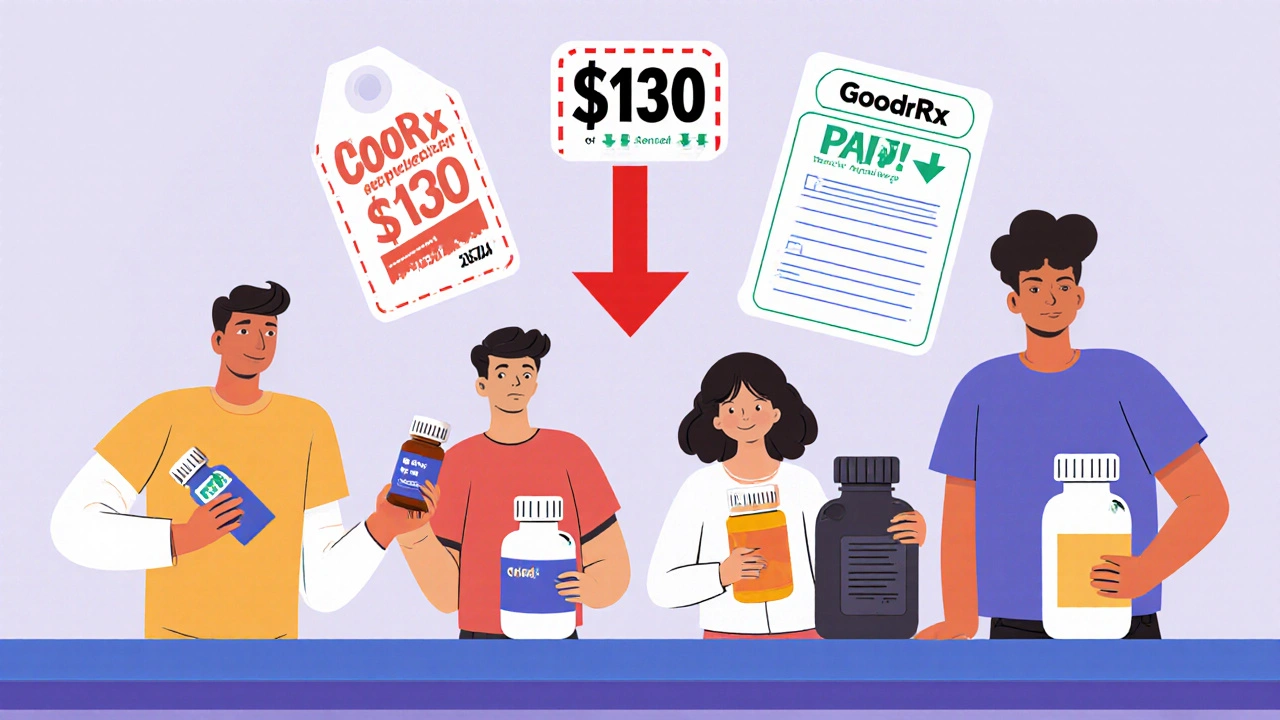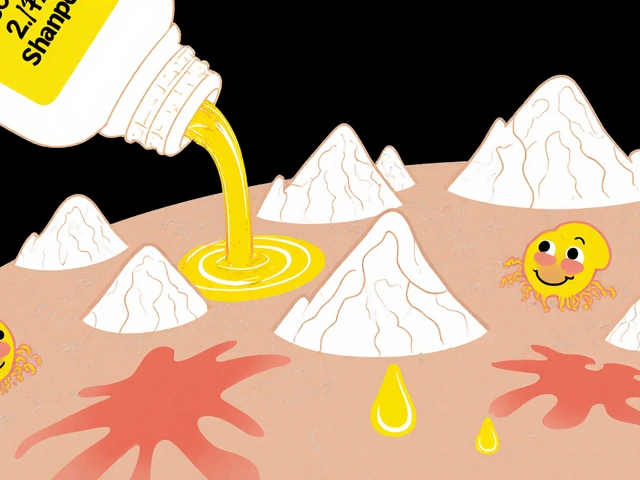How much do you pay for your prescriptions? If you’ve ever stared at a pharmacy receipt and wondered if there’s a better way, you’re not alone. Millions of Americans use prescription discount programs and coupons hoping to cut costs-but do they actually work? The answer isn’t simple. It depends on what drug you’re taking, how you’re insured, and which program you use.
What Are Prescription Discount Programs?
These are tools designed to lower the cash price of medications. They come in three main types:- Manufacturer coupons: Offered by drug companies for brand-name meds. These reduce your copay but don’t lower the drug’s list price.
- Third-party discount cards: Like GoodRx, Blink Health, and SingleCare. These negotiate prices directly with pharmacies and give you a card or code to use at checkout.
- Prescription Assistance Programs (PAPs): Run by nonprofits or clinics. These give free or low-cost meds to people with low income or no insurance.
They’re not insurance. They’re not subsidies. They’re price hacks-sometimes brilliant, sometimes misleading.
When Do They Work Best?
The biggest wins happen with generic medications. A 2022 study found that discount cards like GoodRx cut the price of common generics by an average of 65%. For example, a 90-day supply of metformin that costs $52.80 at retail drops to $18.60 with a coupon. That’s over $30 saved in one swipe.One Reddit user saved $47.83 on their metformin prescription using GoodRx-less than what their insurance copay was. Another saved $18.75 per prescription after abandoning their meds due to cost. These aren’t rare cases. Blue Cross Blue Shield found that over half of members who stopped filling prescriptions ended up using discount cards to get them.
For seniors on Medicare Part D, discount cards can also help. Nearly half saved more than $5 per prescription compared to their plan’s negotiated price. And with Medicare’s new $2,000 annual cap on out-of-pocket drug costs starting in 2025, these tools might become even more useful for filling gaps before the cap kicks in.
When Do They Fall Short?
The problem shows up with brand-name drugs. Discount cards often offer tiny savings-just 6.8% to 11.7% off. For a heart failure medication priced at $1,300, a coupon might knock off $88. That’s not life-changing. One user reported saving only $1.20 on Lyrica, a brand-name nerve pain drug, despite using a coupon.Manufacturer coupons are even trickier. They’re designed to get you to stick with expensive brand-name drugs instead of switching to cheaper generics. Research shows coupon use can boost brand-name sales by 60% or more. That’s bad for the system. The Congressional Budget Office estimates these coupons could increase Medicare Part D spending by $2.7 billion a year.
And here’s the catch: if you’re on Medicare Part D, you often can’t use manufacturer coupons at all. The program doesn’t let them count toward your deductible or out-of-pocket maximum. So you’re paying cash for a coupon that doesn’t help your insurance progress.

How Do You Use Them?
It’s not plug-and-play. You have to work for the savings.For manufacturer coupons: Visit the drugmaker’s website, register, print or download the coupon, and bring it to the pharmacy. Setup takes 8-12 minutes. But not all pharmacies accept every coupon. Some pharmacists don’t know how to process them. One in four users report confusion or delays at the counter.
For discount cards like GoodRx: Open the app, enter your drug name, and compare prices across nearby pharmacies. It takes 5-15 minutes per prescription. You’ll find big differences-sometimes $20 apart for the same pill. But pricing isn’t always consistent. One user complained that GoodRx showed one price online, then another at the counter. That happens.
For PAPs: You need paperwork. Proof of income, doctor’s note, application forms. It’s slow. A free clinic in Tennessee spent 12-16 hours training staff and 3 hours per patient just to process applications. But when it works, the savings are huge: $3,649 per patient over 13 months.
What Do People Really Think?
User reviews tell a mixed story. GoodRx has a 4.3/5 rating on Trustpilot. People love the app, the simplicity, and the generic drug savings. But complaints are loud: inconsistent pricing, no savings on brand names, and pharmacies refusing the card.Medicare users are especially confused. A survey found 42% didn’t know whether to use their discount card or their insurance. That’s not their fault. The system is messy.
Doctors are split too. Some call these programs lifesavers-especially for patients skipping meds because of cost. One study showed adherence jumped from 48.5% to 72.7% after financial help. Others warn they distort the market, pushing patients toward pricier drugs and undermining formulary choices.

Is There a Better Way?
The real fix isn’t coupons. It’s lower drug prices.The Inflation Reduction Act is starting to change things. By 2025, Medicare beneficiaries won’t pay more than $2,000 a year for drugs. That’s huge. And Medicare is now negotiating prices directly with drugmakers for 10 high-cost meds in 2026, with more to come.
That means discount programs might become less necessary for seniors. But for the uninsured, underinsured, or those on high-deductible plans, they’ll still matter.
The future likely belongs to tools that work with insurance-not against it. Some pharmacy chains are testing AI tools that check your insurance coverage in real time and suggest the cheapest option-coupon, insurance, or cash. That’s the smart path forward.
What Should You Do?
Here’s your action plan:- Check your drug. Is it generic? Use GoodRx or Blink Health. Is it brand-name? Skip the coupon unless you’re uninsured.
- Compare prices. Always check your insurance copay first. Then check the discount card price. Don’t assume one is better.
- Ask your pharmacist. They know which coupons work and which don’t. If they say no, ask why.
- Look into PAPs if you’re low-income or uninsured. Sites like NeedyMeds list programs you might qualify for.
- Don’t rely on coupons for Medicare. They won’t help your deductible. Use your plan’s network prices instead.
These programs aren’t magic. But they’re not useless either. Used right, they can save you hundreds a year. Used wrong, they waste your time and money.
Do prescription discount cards work with Medicare?
Yes, but only third-party discount cards like GoodRx. Manufacturer coupons are not allowed on Medicare Part D prescriptions unless you get special approval. Even then, they don’t count toward your deductible or out-of-pocket maximum. Always compare the cash price from the discount card to your plan’s negotiated price-sometimes your insurance is still cheaper.
Are GoodRx coupons free to use?
Yes. GoodRx and similar discount cards are free to use. You don’t pay to sign up, download the app, or print a coupon. The service makes money by partnering with pharmacies and receiving a small fee when you use their price. There are no hidden charges for the consumer.
Can I use a manufacturer coupon and insurance at the same time?
Usually not. Most insurance plans, especially Medicare Part D, don’t allow you to combine manufacturer coupons with your coverage. The coupon is treated as a cash payment, and your insurance won’t apply. Always ask your pharmacist before presenting a coupon if you’re insured.
Why do some pharmacies say they don’t accept GoodRx?
Some pharmacies, especially smaller or independent ones, don’t participate in the discount card networks. Others may accept the card but say no because the price is too low for them to profit. Chain pharmacies like CVS, Walgreens, and Walmart almost always accept GoodRx. If one location refuses, try another nearby.
Do these programs help with expensive brand-name drugs?
Rarely. Discount cards typically offer only 6-12% off brand-name drugs, which still leaves you paying hundreds or thousands. Manufacturer coupons may reduce your copay, but they’re often only available if you have private insurance-not Medicare or Medicaid. For high-cost brand-name drugs, look into Prescription Assistance Programs (PAPs) instead. They can give you the drug for free if you qualify.
What’s the difference between a coupon and a discount card?
A manufacturer coupon is tied to one specific drug from one company. You get it from the drugmaker’s website. A discount card (like GoodRx) works across many drugs and pharmacies. It’s a price comparison tool that negotiates cash prices with pharmacies. The card gives you flexibility; the coupon gives you a fixed discount on a single drug.
Can I use these programs for pet medications?
Yes. Many discount cards, including GoodRx, offer prices for pet prescriptions too. Drugs like gabapentin, amoxicillin, and metronidazole are often much cheaper with a coupon. Always check with your vet first to confirm the dosage and whether the human version is safe for your pet.
Are prescription discount programs legal?
Yes, they’re completely legal. Third-party discount cards operate as price comparison services and are regulated by state pharmacy boards. Manufacturer coupons are allowed under federal law, though they’re under scrutiny by the FTC for potentially inflating drug prices. As long as you’re not falsifying information or using them fraudulently, using these programs is perfectly legitimate.



Gus Fosarolli
27 November / 2025So let me get this straight - we’ve got a system where drug companies make billions, pharmacies play shell games with pricing, and the only thing saving people is a free app that looks like it was coded by a sleep-deprived intern? 🤦♂️ I saved $42 on my metformin last month. My insurance wanted $87. GoodRx didn’t fix the system. It just turned me into a price-hunting ninja. I’m not grateful - I’m furious.